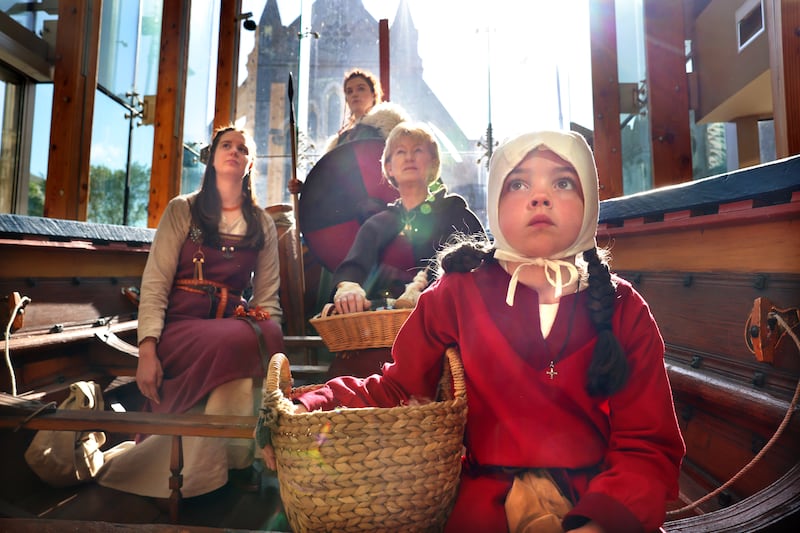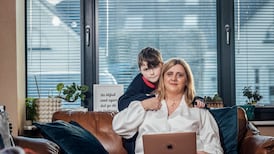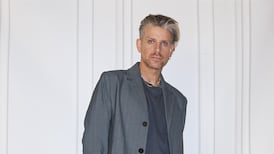I was born in Sweden, my mum is Swedish, but we moved here when I was three. I grew up in Dublin, but we go back and forth between the two countries quite a lot.
I’ve always had a fascination with history. I was around nine when I learned about the Stone Age for the first time. I remember going out the next day and finding sharp rocks to try to make stone tools. Later, I did a degree in archaeology and geography, and a master’s in archaeology.
My primary role at Dublinia is teaching archaeology to adults, from prehistoric times all the way up to medieval times. The course is free, and for a lot of people it’s a way of retraining and upskilling. Many of my learners will have had an interest in heritage, but studying it might not have been an option for them. Some are like kids again, getting to come back and learn about something they genuinely love.
Seeing them progress is the best part. More than 90 per cent of them get employed quite quickly in a heritage job. Some days, I’ll walk past the Viking Splash tour, or I’ll go into St Patrick’s Cathedral, and there will be one of them. It can open up doors for people.
READ MORE
I also oversee Dublinia’s living history team, ensuring our living historians are costumed authentically. They are dressed head to toe as characters. You could be a Viking warrior, a medieval herbalist or a barber surgeon.
After a few generations, the Vikings become more Irish than Norse, but they still keep some of their traditions
They will let you hold replica objects, such as a carved deer antler, and it gives you a tangible link to the past. You are not just seeing it in a glass cabinet.
The earliest records we have of Vikings coming was about AD 795, as raiders. They were mostly Norwegian, with some Danish. They were coming to carry out quick attacks – usually on monasteries which were full of grain, gold and silver, and were pretty undefended.
After the raiding period, we start getting settlements. In Dublin, we get our first over-winter where in the winter of AD 841, they decide not to go home. This is when the Vikings start to settle and start trading with us. Not long after, we see intermarriage.
The Viking men were tall, blonde lads. They definitely had better standards of hygiene than the Irish. They bathed themselves much more regularly, so I’d say the Irish women were like, “Yes, great, I’ve a much cleaner man to go for.”
After one or two generations, you start to see the cultures mix. You have people who would probably have identified themselves as Hiberno-Norse. I’m half-Irish, half-Swedish, but my kids, if I have them here, are probably not going to feel particularly attached to Sweden.
[ Brian Boru didn’t save Ireland from the VikingsOpens in new window ]
So after a few generations, the Vikings become more Irish than Norse, but they still keep some of their traditions.
I speak Swedish at home but I grew up in Ireland, so I think it’s easier for me to understand this mixing of cultures.

The Norse added to our culture, they added new language, we got new words and we got coins. King Sitric Silkenbeard minted the first ever coin here in AD 997 and changes everything for us.
We also start getting villages, towns and cities for the first time. Dublin, Wexford and Waterford are based on Viking foundations.
We know Viking women carried cosmetic items on them – we’ve found tweezers, ear scoops and toothpicks attached to clothing
Our new exhibition is on Viking women. They are becoming more of a hot topic in archaeology. They came to Ireland too. We know that primarily their role was in the home. They worked as weavers too. Weaving was an exceptionally important role because for everything, you needed cloth. In Viking Iceland, they used cloth as money – they didn’t have coins – so actually in making cloth you were making your own money.
When we find Viking female burials, they are buried with items linked to weaving such as a spindle whorl, which is an early spinning wheel, or loom weights.
[ ‘You can’t really be a Viking if there isn’t a bit of bloodshed’Opens in new window ]
We have found really beautiful little fragments of weaving too; one is a small, really delicate band, woven with gold and silk. So we know they were making quite high-status items here.
Viking women would have held a lot of political power and could get divorced if they wanted. When a man went away on a raid the woman took control of the farm, so they actually had a lot of status in Viking society.
We know Viking women carried cosmetic items on them – we’ve found tweezers, ear scoops and toothpicks attached to clothing, almost like a little make-up bag you keep on your dress.
I’ve had the opportunity to learn a number of new crafts, which I teach to the rest of the team. I’ve learned nalbinding, or Viking knitting, trichinopoly, which is wire weaving, and tablet weaving, with which I’ve recreated a number of Viking belts.
It is really interesting to see an Irish object come back into Dublinia after having been in Norway for a thousand years
While weaving in particular, I feel strongly connected to my past. It’s strange that, when you are going through these motions, you are doing something in the exact same way as somebody a thousand years ago.
When I started weaving, I felt like this was just the most fun craft I had ever done. Only recently, I’ve reconnected with a great uncle who told me my great grandparents on my Swedish side were weavers. Knowing that was very special to me.
When you walk up Fishamble Street, that curve in the road is almost identical to what would have been there in the Viking age. You can imagine there would have been Viking houses either side. There were Viking houses found on Dean Street and settlements on Ship Street. Even though our city is so modern, there are still fragments from the Viking period.
[ Olaf the Viking: a one-man mintOpens in new window ]
We’ve been very lucky to get some artefacts from the University of Stavanger in Norway. These were Irish-made, but found in Norway. It is really interesting to see an Irish object come back into Dublinia after having been in Norway for a thousand years.
I think what I love about what I do is that I still get to study archaeology. I’ve made a career based on what I love which is so special. I am so lucky that I have a job that is my passion.













